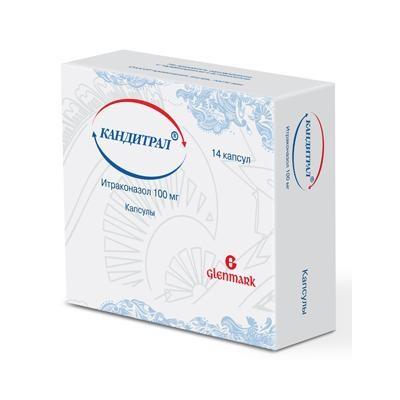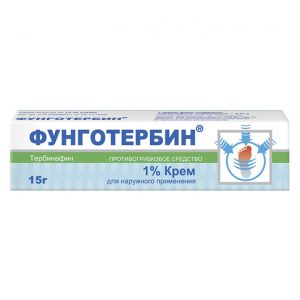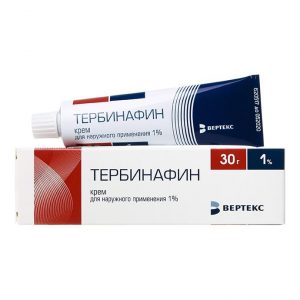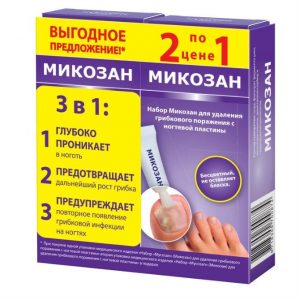Description
Packing
14 pcs.
Pharmacological action
CANDITRAL is a synthetic broad-spectrum antifungal agent derived from triazole. It inhibits the synthesis of ergosterol, which is an important component of the cell membrane of fungi.
Itraconazole is active against dermatophytes (Trichophyton spp., Microsporum spp., Epidermophyton floccosum) of yeast-like fungi and yeast (Cryptococcus neoformans, Pityrosporum spp., Trichosporon spp., Geotrichum spp., Candidaidae Candida, Candida libida ) Aspergillus spp., Histoplasma spp., Paracoccidioides brasiliensis, Sporothrix schenckii, Fonsecaea spp., Cladosporium spp., Blastomyces dermatitidis, Pseudallescheria boydii, Penicillium marneffei, as well as other yeast and mold fungi.
Pharmacokinetics
Absorption
When administered orally, the maximum bioavailability of itraconazole is observed when capsules are taken immediately after meals. The time to reach Cmax is 3-4 hours.
Distribution of
The equilibrium plasma concentration of itraconazole 3-4 hours after taking the drug is 0.4 μg / ml (when taking 100 mg once a day), 1.1 μg / ml (when taking 200 mg one once a day) and 2.0 μg / ml (when taken 200 mg twice a day). With prolonged use, an equilibrium concentration is achieved within 1-2 weeks. Communication with plasma proteins – 99.8%.
Itraconazole penetrates well and is distributed in tissues and organs. The concentration of the drug in the lungs, kidneys, liver, spleen, stomach, bones, skeletal muscles is 2-3 times higher than its concentration in plasma. The accumulation of itraconazole in keratin tissues, especially in the skin, is 4 times higher than in plasma, and the rate of excretion depends on the regeneration of the epidermis.
In contrast to plasma concentrations that are not detectable as early as 7 days after discontinuation of treatment, the therapeutic concentration of itraconazole in the skin persists for 2-4 weeks after discontinuation of the 4-week course of treatment in the vaginal mucosa – for 2 days after the end of a 3-day course of treatment at a dose of 200 mg per day and 3 days after the end of a one-day course of treatment at a dose of 200 mg twice a day.
The therapeutic concentration of the drug in keratin nails is determined 1 week after the start of treatment and persists for 6 months after completion of a 3-month course of therapy. Itraconazole is also determined in the secretion of the sebaceous and sweat glands.
Metabolism
Metabolized by the liver with the formation of active metabolites, one of which – hydroxy-itraconazole – has an antifungal effect comparable to that of itraconazole – in vitro.
Excretion
Excretion from plasma is biphasic with a final elimination half-life of 24 to 36 hours.
Excretion with feces is from 3 to 18% of the dose. Excretion by the kidneys – less than 0.03% of the dose.
Approximately 35% of the dose is excreted as metabolites in the urine within 1 week.
Pharmacokinetics in special clinical cases
In patients with renal failure, as well as in some patients with impaired immunity (for example, AIDS, after organ transplantation or neutropenia), the bioavailability of itraconazole may be reduced. In patients with cirrhosis, the bioavailability of itraconazole is reduced, elimination half-life is increased.
Indications
dermatomycosis
fungal keratitis
onychomycosis caused by dermatophytes and / or yeast and molds
systemic mycoses: systemic aspergillosis and patient candidiasis cryptococcosis cryptococcosis and cryptococcosis of the patient, including cryptococcosis and cryptococcosis cases if first-line drugs are not applicable in this case or are not effective)
histoplasmosis
sporotrizosis
paracoccidioidomycosis
blastomycosis
other systemic or tropical mycoses
candidomycosis with candidiasis of sulcus vulvaris vulvaris
Special instructions
Women of childbearing age who are taking Canditral need to use adequate contraceptive measures throughout the course of treatment until the onset of the first menstruation after its completion.
When examining the intravenous dosage form of the drug Itraconazole, a transient asymptomatic decrease in the ejection fraction of the left ventricle was observed, normalizing until the next infusion of the drug.
Itraconazole has been found to have a negative inotropic effect. Cases of heart failure associated with Canditral have been reported. Canditral should not be taken in patients with chronic heart failure or with a history of the disease, unless the potential benefit significantly exceeds the potential risk.
Calcium channel blockers can have a negative inotropic effect, which can enhance the similar effect of itraconazole. Itraconazole can reduce the metabolism of calcium channel blockers. With the simultaneous administration of itraconazole and calcium channel blockers, caution should be exercised.
In patients with renal failure, the bioavailability of itraconazole may be reduced, which may require dose adjustment.
With reduced gastric acidity, absorption of itraconazole is impaired. Patients taking antacids (for example, aluminum hydroxide) are recommended to use them no earlier than 2 hours after taking Canditral. Patients with achlorhydria or using H2-histamine blockers or proton pump inhibitors are advised to take Canditral capsules with acidic drinks.
In very rare cases, when using Canditral, severe toxic liver damage developed, including cases of acute liver failure with a fatal outcome. This happened with patients who already had liver disease, as well as in patients receiving other drugs with hepatotoxic effects. Several such cases occurred in the first month of therapy, and some in the first week of treatment. In this regard, it is recommended to regularly monitor liver function in patients receiving itraconazole therapy.
Treatment should be discontinued if neuropathy occurs, which may be associated with the use of Canditral capsules.
There is no evidence of cross-sensitivity to itraconazole and other azole antifungal drugs. Canditral capsules should be used with caution in patients with hypersensitivity to other azoles.
Patients with impaired immunity (AIDS, after organ transplantation, neutropenia) may require an increase in the dose of Canditral.
Pediatric use
Canditral should not be given to children, unless the expected benefit outweighs the potential risk.
Impact on ability to drive and operate
equipment Not observed.
Composition
1 capsule contains:
Active ingredient:
Itraconazole
Excipients:
Hypromellose (E5 hydroxypropyl methylcellulose)
Eudragit E-100 (methyl methacrylate copolymer dimethylaminoethyl methacrylate and butyl methacrylate)
Sucrose
Capsules Composition: Gelatin
Purified Water
Methyl parahydroxybenzoate Propyl parahydroxybenzoate Sodium lauryl
Dosage and Administration
Inside, after meals.
Vulvovaginal candidiasis – 200 mg 2 times a day or 200 mg 1 time per day.
Pityriasis versicolor – 200 mg 1 time per day.
Dermatomycosis of smooth skin – 200 mg 1 time per day or 100 mg 1 time per day.
Lesions of highly keratinized areas of the skin, such as hands and feet – 200 mg 2 times a day or 100 mg 1 time per day.
Oral candidiasis -100 mg 1 time per day.
Fungal keratitis – 200 mg once a day.
Possible correction of treatment duration taking into account the positive dynamics of the clinical picture.
Oral bioavailability may be reduced in some immunocompromised patients, such as patients with neutropenia, AIDS patients or patients with transplanted organs. In these cases, a double dose increase may be required.
Side effects
From the gastrointestinal tract: dyspepsia, nausea, vomiting, decreased appetite, abdominal pain, diarrhea, constipation.
From the hepatobiliary system: a reversible increase in the activity of liver transaminases, hepatitis is very rare – severe toxic damage to the liver, including acute liver failure with a fatal outcome.
From the nervous system: headache, dizziness, peripheral neuropathy.
Allergic reactions: skin rash, pruritus, urticaria, angioedema, rarely erythema multiforme exudative (Stevens-Johnson syndrome).
From the skin: alopecia, photosensitivity
Others: menstrual irregularities, hypokalemia, edema syndrome, congestive heart failure and pulmonary edema, hypercreatinemia, dark urine.
Drug interactions
Medicines that affect the absorption of itraconazole:
Drugs that reduce the acidity of the gastric juice reduce the absorption of itraconazole.
Drugs that affect itraconazole metabolism:
Itraconazole is primarily cleaved by the enzyme CYP3A4. With simultaneous use with rifampicin, rifabutin, phenytoin, carbamazepine, isoniazid, which are powerful inducers of the enzyme CYP3A4, the bioavailability of itraconazole and hydroxy-itraconazole is significantly reduced, which leads to a significant decrease in the effectiveness of the drug.
The simultaneous use of Canditral with these drugs, which are potential inducers of liver enzymes, is not recommended.
Potent inhibitors of the enzyme CYP3A4, such as ritonavir, indinavir, clarithromycin, and erythromycin, can increase the bioavailability of itraconazole.
Effect of itraconazole on the metabolism of other drugs:
Itraconazole may inhibit the metabolism of drugs cleaved by the CYP3A4 enzyme. The result of this may be an increase or prolongation of their action, including side effects. After stopping treatment with Canditral, the concentration of itraconazole in plasma decreases gradually depending on the dose and duration of treatment (see section Pharmacokinetics). This must be taken into account when discussing the inhibitory effect of itraconazole on concomitant medications.
Examples of such drugs are:
Drugs that are not recommended to be administered concomitantly with Canditral:
calcium channel blockers – in addition to the possible pharmacokinetic interaction associated with the general metabolic pathway involving the CYP3A4 enzyme, calcium channel blockers may have a negative inotropic effect, which is enhanced while taking Canditral.
Drugs, with the simultaneous administration of which it is recommended to monitor their plasma concentration, action, side effects. If necessary, the dose of these drugs should be reduced:
oral anticoagulants
HIV protease inhibitors (ritonavir, indinavir, saquinavir)
some antitumor drugs (pink periwinkle alkaloids, busulfan, docetaxel digestive enzymes )
some immunosuppressive agents (cyclosporine, tacrolimus, sirolimus (also known as rapamycin)
some enzyme-cleaved CYP3A4 reductase inhibitors G G-CoA (atorvastatin)
some glucocorticosteroids (budesonide, dexamethasone and methylprednisolone)
other drugs: digoxin, carbamazepine, buspirone, alfentanil, alprazolam, brotizolam, midazolam for / in the introduction, rifabutin, ebastine, reboxetine, cilostazol, disopyramide, eletriptan, halofantrine, repaglinide.
No interaction was found between itraconazole zidovudine and fluvastatin.
No effect of itraconazole on the metabolism of ethinyl estradiol and norethisterone was observed.
In vitro studies have shown a lack of interaction between itraconazole and drugs such as imipramine, propranolol, diazepam, cimetidine, indomethacin, tolbutamide and sulfamerazine when bound to plasma proteins.
Storage conditions
In a dry, dark place at a temperature of no higher than 25 ° C.
Expiration
2.5 years
Deystvuyuschee substances
Itraconazole
Conditions of supply of
Pharmacy Prescription
Form of Treatment
kapsul
Appointment of
Adult prescription
Glenmark Farmasʹûtikalz Ltd, India




